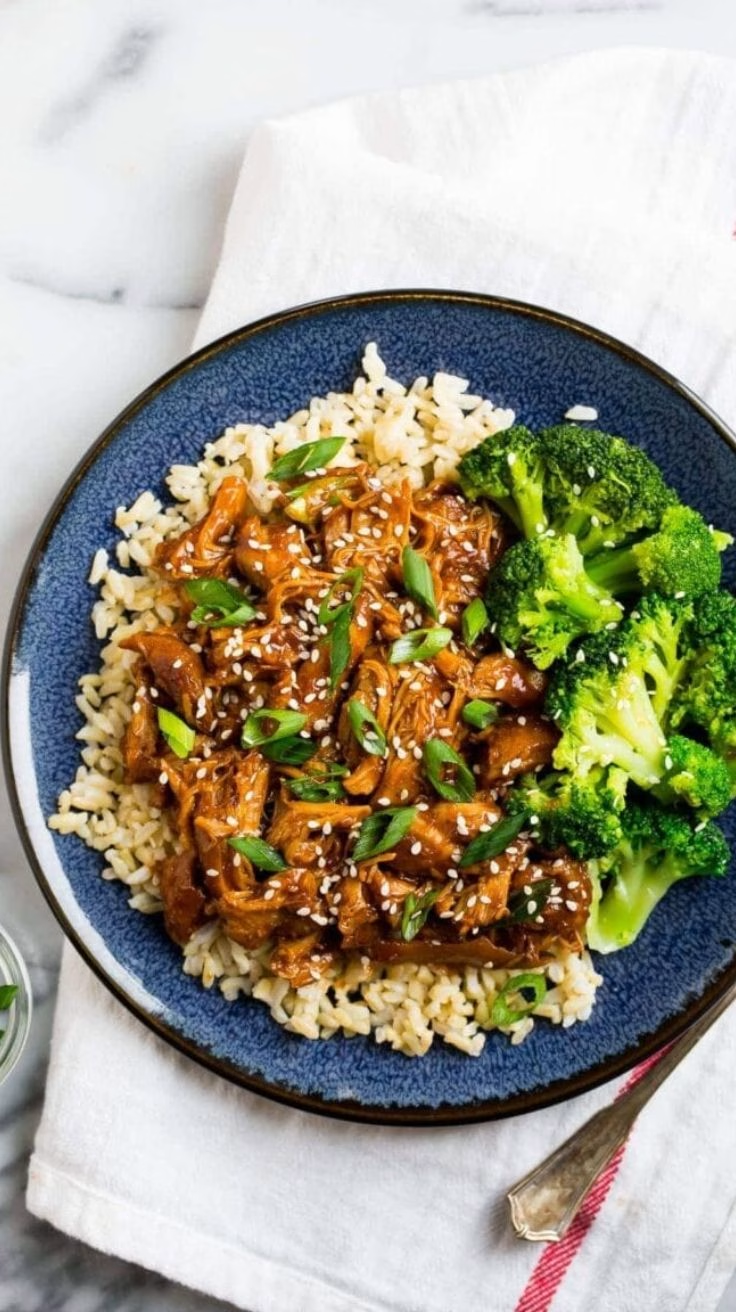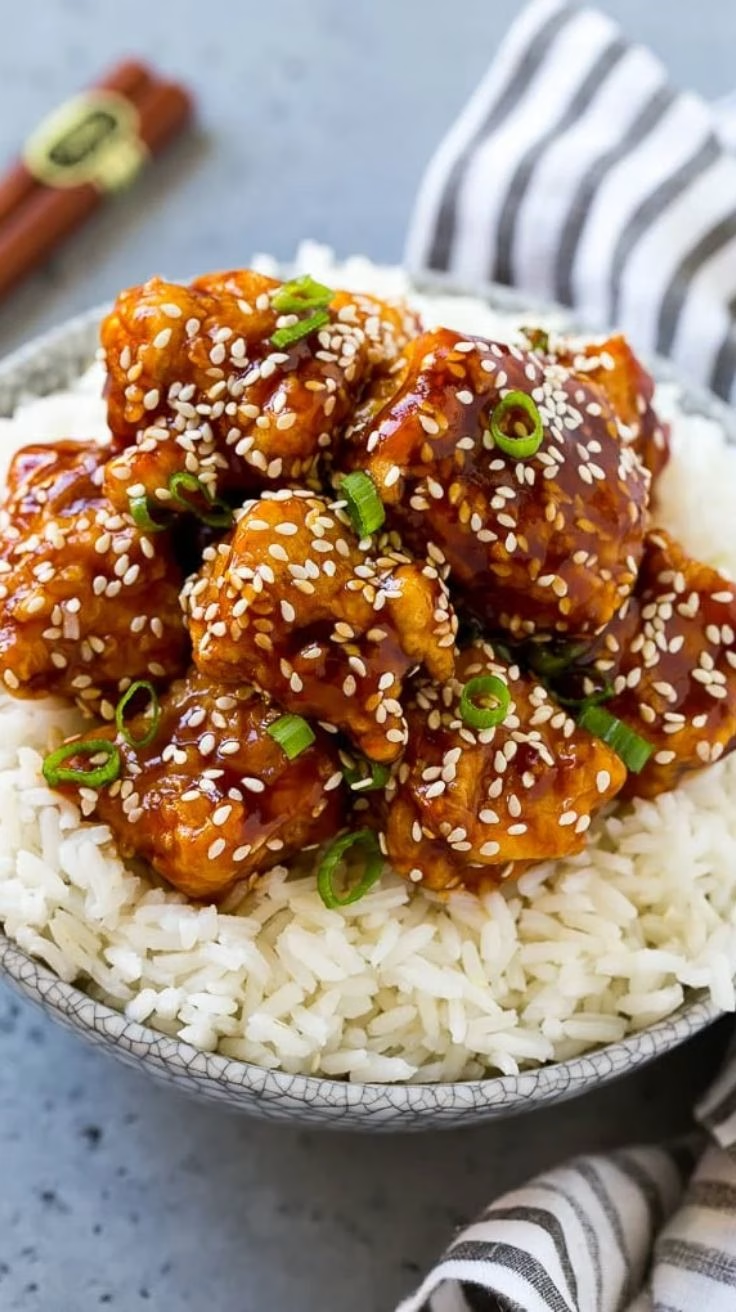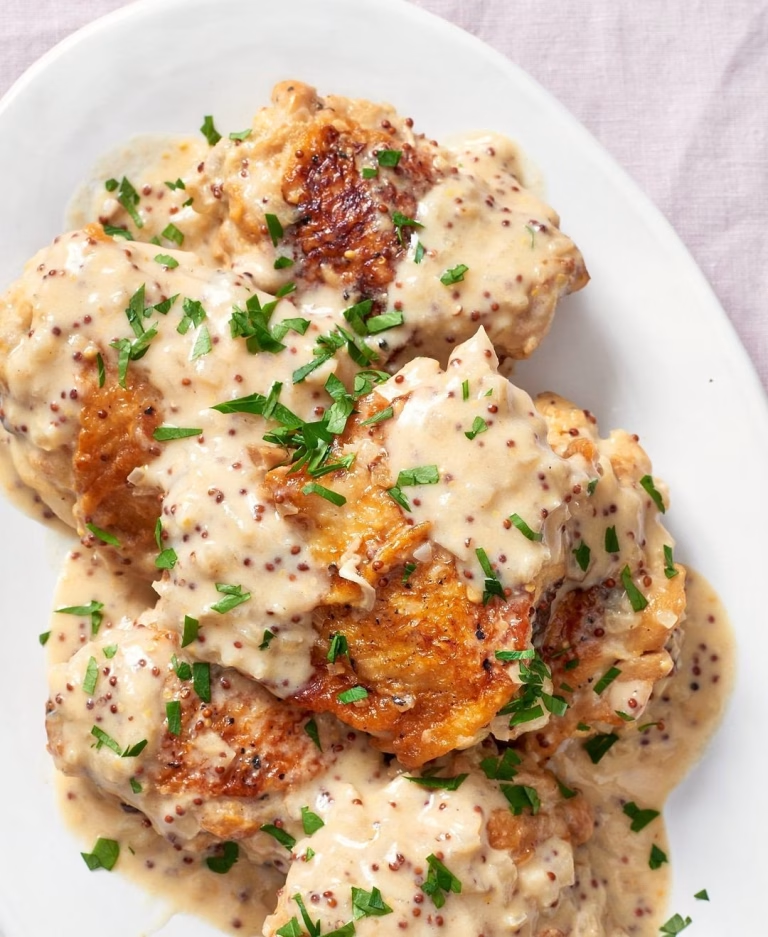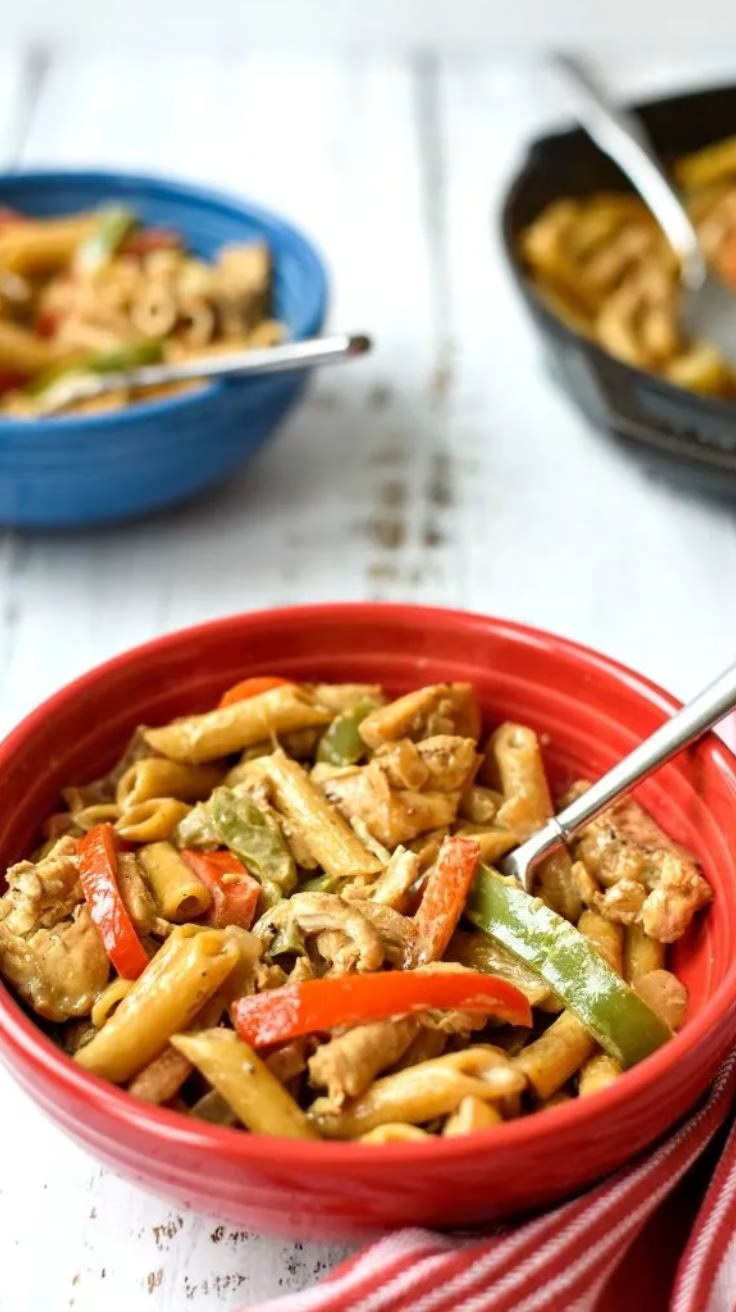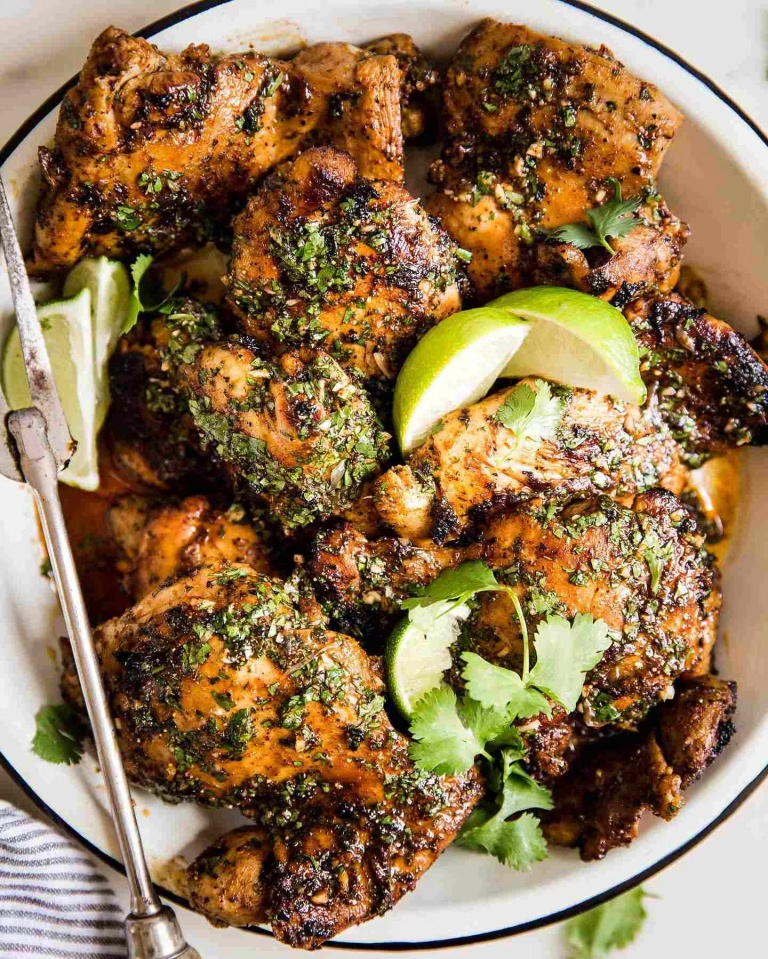If you’ve ever made a chicken pot pie skillet recipe, you probably already know how comforting and satisfying it can be. There’s just something about that golden, flaky top paired with a creamy, savory filling that hits the spot every single time.
I’ve made this dish more times than I can count, and along the way, I’ve picked up some helpful tips, discovered a few clever shortcuts, and even learned how to store it properly for leftovers that still taste amazing. If you’re thinking about trying this recipe or just want to make your version even better, you’re in the right place.
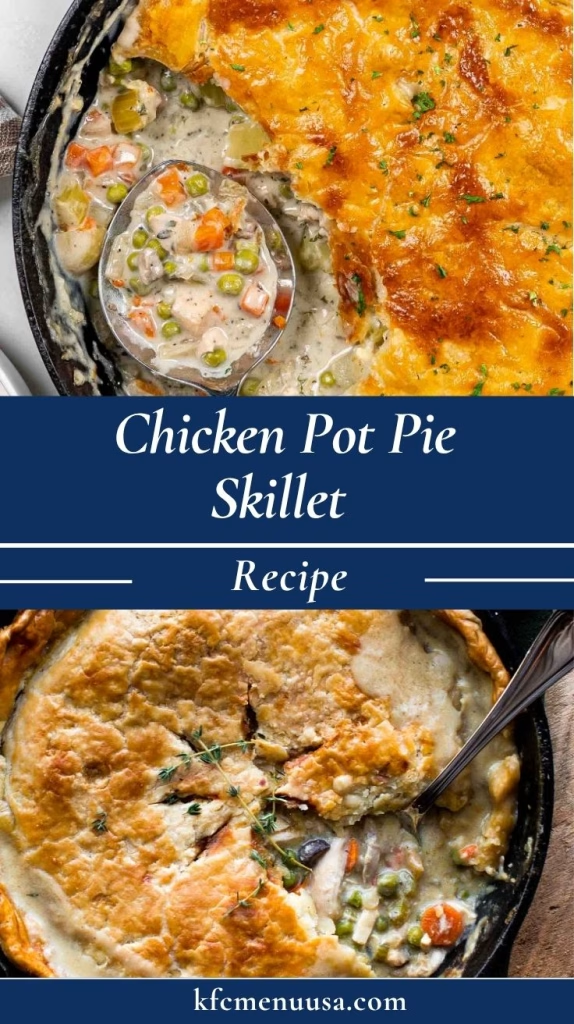
How to Get the Filling Just Right? (Without Making It Too Soupy)
One of the most common questions I hear is: “How thick should the filling be?” Honestly, it depends on your personal preference, but for me, a thick and creamy filling always feels more indulgent and comforting.
If your mixture is too runny, it can soak through the crust and ruin that perfect texture. What I like to do is let the sauce simmer just a little longer until it thickens nicely. Adding a small amount of flour or cornstarch while cooking also helps lock everything together without making it feel like a heavy paste.
Also, don’t overdo the broth or milk. Start with less than you think you need—remember, it’s always easier to add more liquid later than to fix a filling that’s too loose.
Don’t Skip the Skillet Magic
Cooking your pot pie in a skillet doesn’t just make cleanup easier—it actually enhances the dish. I usually go for a well-seasoned cast iron skillet. It distributes heat evenly, crisps up the crust beautifully, and keeps everything warm long after it leaves the oven.
If you don’t have cast iron, any oven-safe skillet will do the trick. Just make sure it’s deep enough to hold that generous filling without spilling over the sides.
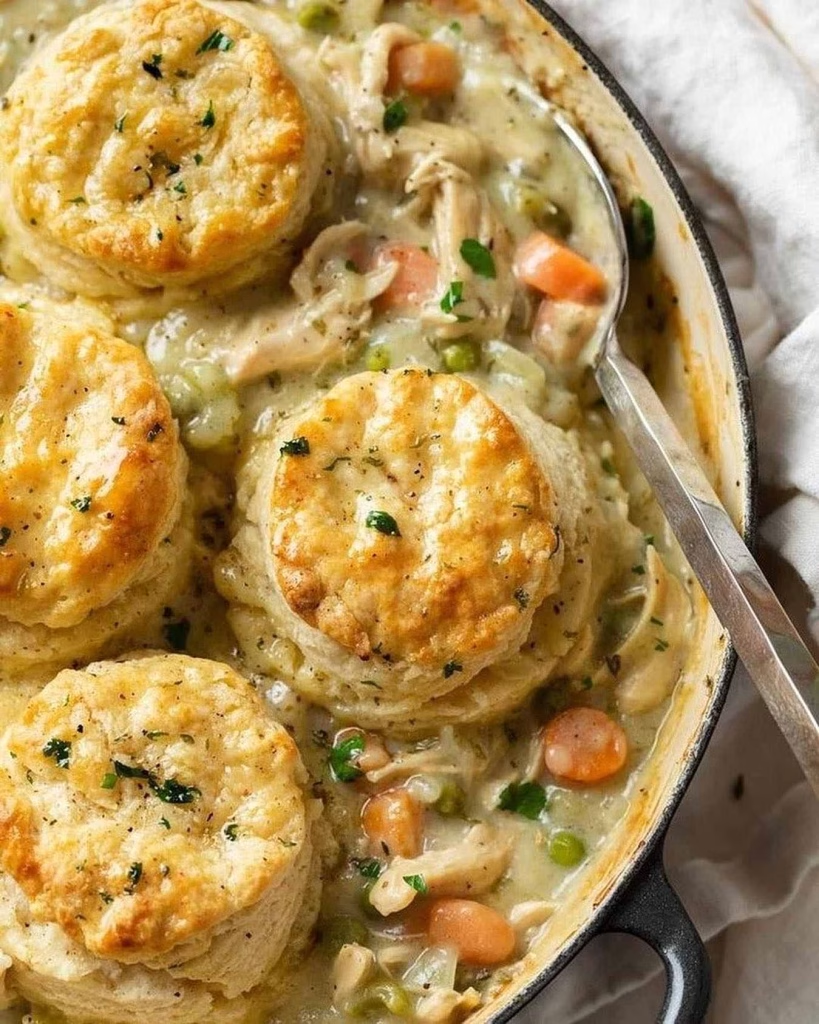
Using Rotisserie Chicken? Here’s How to Make It Taste Fresh
I get it—sometimes you just don’t have the time (or energy) to cook chicken from scratch. I’ve used rotisserie chicken more times than I can count, and it honestly works great in this recipe. But here’s the thing: it can sometimes taste a bit dry or bland once it’s been reheated in the skillet.
To fix that, I toss the shredded rotisserie chicken in a little melted butter and a pinch of garlic powder before adding it to the filling. It brings out more flavor and gives the meat a “just-cooked” vibe. You could also splash in a little chicken broth if the meat looks too dry.
Making It Ahead? Smart Tips for Prepping in Advance
One of my favorite things about a chicken pot pie skillet recipe is that you can totally make it ahead of time. If you know your evenings are going to be chaotic (been there!), you can prep the filling the night before, store it in the fridge, and then just add the topping and bake it fresh the next day.
If you’re going the freezer route, let the cooked filling cool completely first. I usually store it in a freezer-safe container, and when I’m ready to use it, I thaw it in the fridge overnight and reheat gently on the stove before topping it with pastry and popping it in the oven.
Just a heads-up: don’t freeze it with the biscuit or puff pastry already on top. That part’s best added fresh so it rises properly and stays golden and crisp.
Crust Options That Actually Work (And Taste Amazing)
Let’s talk crust for a second, because this part can be make-or-break. I’ve tried all kinds—puff pastry, biscuit dough, crescent rolls, even leftover mashed potatoes—and they all bring something a little different to the table.
If you’re using store-bought puff pastry, I recommend letting it thaw just enough so it’s easy to handle but still cold when you place it on top of the filling. Cold pastry hits hot filling and creates that perfect flaky rise.
Want a more rustic vibe? Biscuit dough gives the whole dish a cozy, Southern twist. I usually flatten each biscuit just a little before placing it on top so they bake evenly and cover more surface area.
Crescent dough gives a slightly sweeter, softer finish, while mashed potatoes (like a shepherd’s pie hybrid) create a creamy, comforting topping that’s amazing on a chilly night.
How Long Does It Last in the Fridge?
If you’re anything like me, you love having leftovers—but only if they actually taste good the next day. The good news? This dish holds up really well in the fridge. You can store it for about 3 to 4 days in an airtight container.
The key is to reheat it slowly. I usually cover it loosely with foil and warm it in the oven at 350°F for about 20 minutes. Microwaving works in a pinch, but the crust won’t stay crisp. If you go the microwave route, just know you’re trading crunch for convenience.
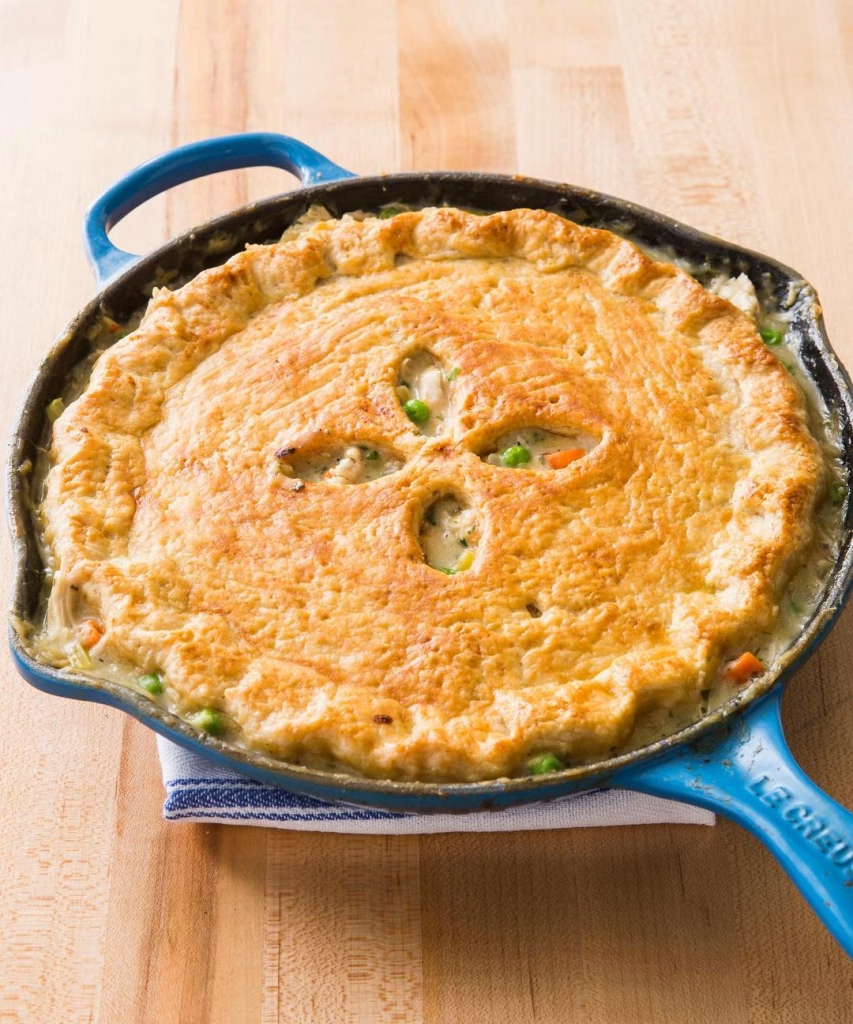
Can You Freeze It Fully Assembled?
Yes, but with a few caveats. Like I mentioned earlier, I prefer to freeze the filling on its own and bake it fresh with pastry later. But if you really want to freeze the entire thing—crust and all—make sure it’s completely cooled before wrapping it tightly in plastic wrap and foil. Label it with the date, and it should be good for up to 2 months.
To bake from frozen, don’t thaw it first. Just add a few extra minutes to the cooking time and keep it covered with foil for the first half to avoid over-browning the crust.
Best Veggies to Use (Fresh, Frozen, or Leftovers?)
One thing I love about this dish is how forgiving it is. I’ve used everything from fresh carrots and celery to frozen peas and even leftover roasted veggies. If you’re short on time, a bag of frozen mixed vegetables works perfectly. Just thaw them slightly before adding to the filling so they don’t release too much water and thin things out.
And if you’re trying to sneak in more greens (I do this all the time), a handful of baby spinach or kale wilts down beautifully and adds a nice color contrast.
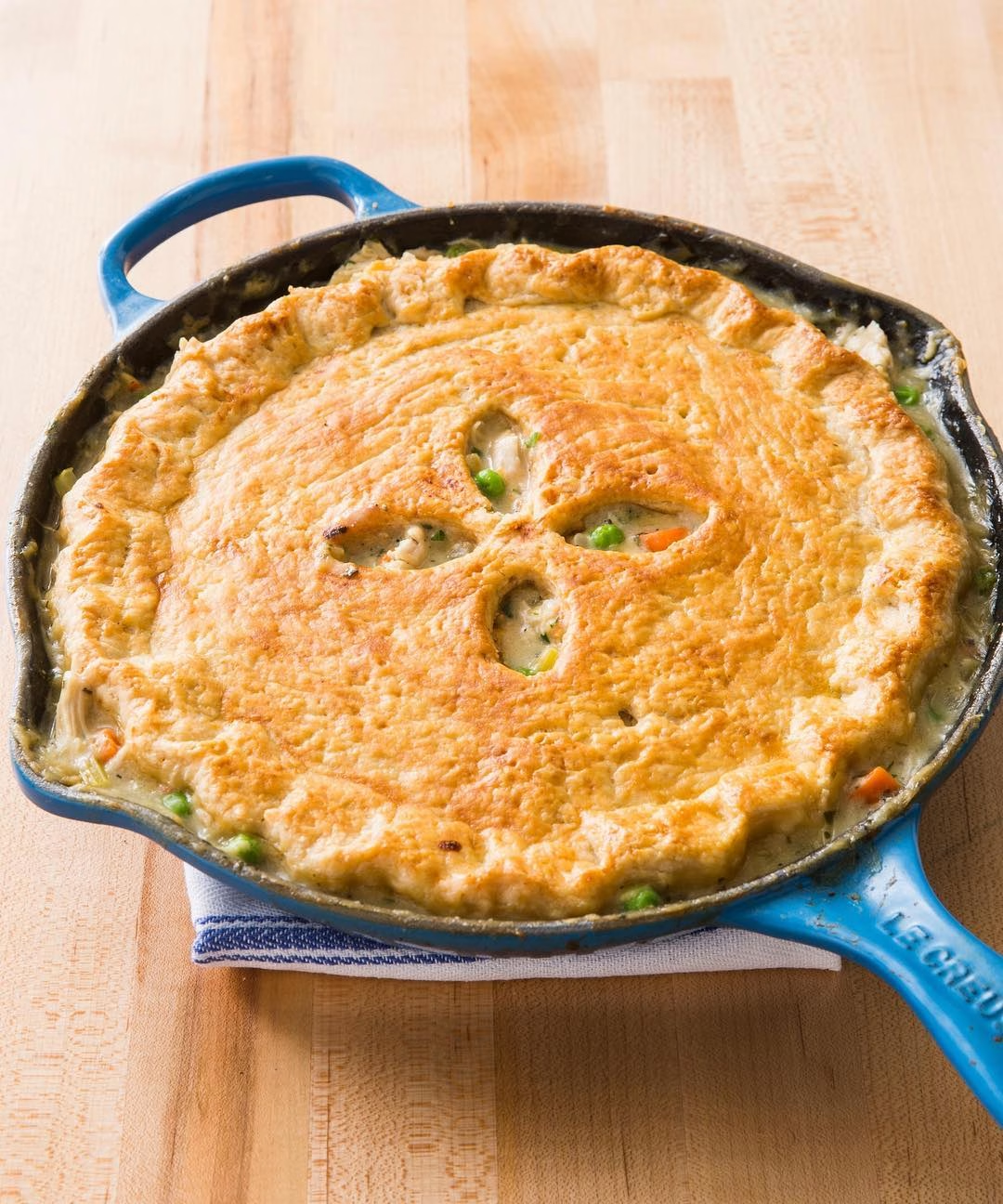
Chicken Pot Pie Skillet Recipe
Ingredients
Method
- First, heat the olive oil in your skillet over medium-high heat. I toss in the chopped onion and cook until it’s soft and fragrant, about 3–4 minutes. Then, I add the bite-sized chicken pieces, stirring so they brown just enough to get some color. This step builds flavor early, making the filling way more delicious than a bland one-pot dump.
- After the chicken is mostly cooked through, I push everything to the side, swirl in the butter, and let it melt. Then the flour goes in—it forms a roux which transforms the filling from runny to creamy. Gradually, I whisk in the chicken broth and milk to avoid lumps. I add fresh thyme, season with salt and pepper, and let the mixture gently simmer. This thickens into that velvety sauce so comforting in every bite.
- Once the sauce coats the back of the spoon, I toss in the frozen mixed vegetables. No thawing needed—they heat quickly in the hot mixture and release minimal water. Taste and tweak with additional salt or pepper as needed. This is where it really starts to look and feel like pot pie filling—creamy, chunky, colorful, and aromatic.
- With the filling bubbling gently, I lay the thawed puff pastry sheet directly over the skillet. I press it down lightly around the edges to seal in the goodness. Then, I slash a couple of vents on top so steam can escape. Slide the skillet into a preheated oven (around 400°F) and bake for about 20–25 minutes, until the crust is puffed and beautifully golden.
- Once the crust is crisp and flaky, I carefully bring the skillet out of the oven (use oven mitts!), and let it rest for 5 minutes. This brief rest helps the filling set just a bit so it’s easier to serve and even more comforting to eat. Scoop generous servings straight from the skillet and watch the smiles spread.

